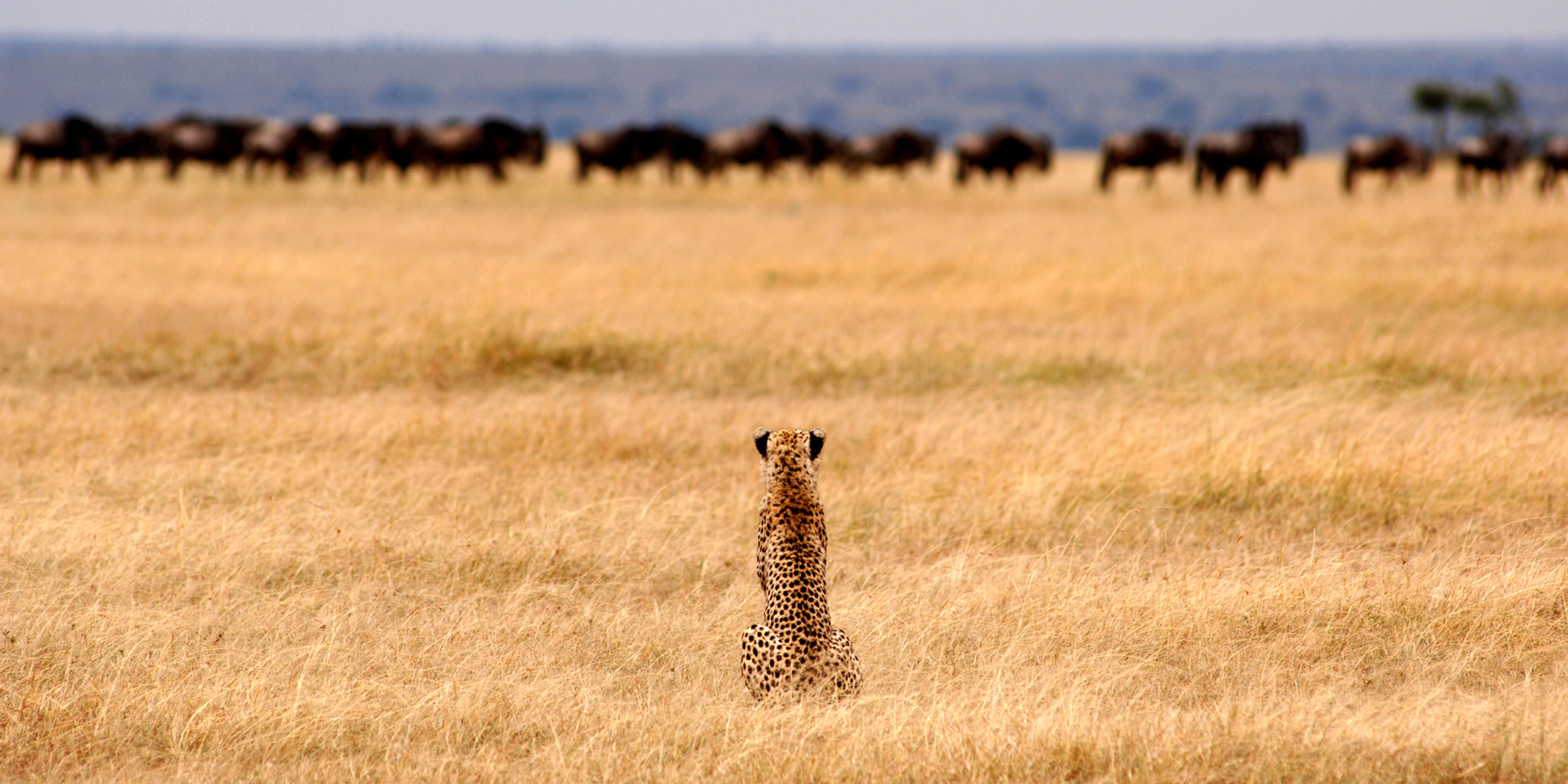Where is the Great Migration located, and why?
At this time, due to the onset of Tanzania’s short rains in November and December (that can often be heavier than the long rains of April and May) the Migration is spread out across the entirety of the Serengeti’s southern short grass plains and north/north west sections of the Ngorongoro Conservation Area. For the next few months – officially Tanzania’s wet season - the herds will be spread out Kusini in the southwest of the Serengeti through the Moru Kopjes, the Ndutu Plains (actually in the northern section of the Ngorongoro Conservation Area) and as far east as the Gol Mountains and Salei Plains to the north of the Ngorongoro Crater itself. Herds will also be found as far south as Kakesio, a stunning area on the northern border of Lake Eyasi and the Rift Valley itself. It is a vast area with the herds moving around the region based on localised rainfall.
Much of this area is officially ‘arid savannah’ (especially the east where there are even Oryx found). Rain is unpredictable here but due to the volcanic soil that carpets this specific region, it is a region that is home to the most nutritious grasses in the entire Serengeti eco-system. With good rain the entire area can transform into a seemingly endless pasture of lush, nutritious grass that’s grown in fertile, volcanic soil…providing the perfect combination of minerals for wildebeest and especially their young.
Rich in minerals such as phosphorous, magnesium and sodium (good for muscle growth and young bones), the herds would stay in these short grass plains forever if they had the choice. However, the start of the dry season kicks in and this arid savannah slowly turns into a dust bowl at the peak of the dry season, leaving the herds with no choice but to move on. Only the desert ‘adapted’ survive here for the rest of the year.
The peak of this calving season usually occurs in January and February, but you will see new-born in December and also March. There are irregularities - 20% of the new born wildebeest are born outside of this traditional calving period.
Their +/- 600 kilometre round trek takes the best part of the year, but the herds leave the short grass plains as late as possible, and return as soon as they can. April and May usually sees them leave, whilst December sees their return. One satellite tagged wildebeest turned his 600 kilometre round trip into a 2,400km long adventure…imagine doing that in the first few months of your life!
 UK / International
UK / International
 USA
USA
 CA
CA
 Australia
Australia









